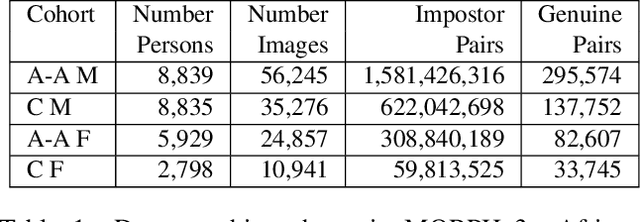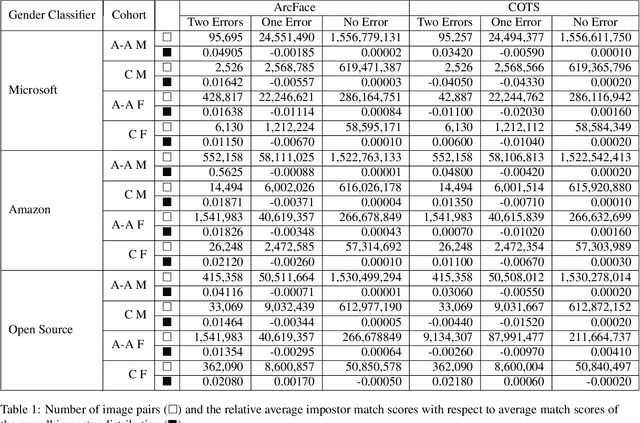Does Face Recognition Error Echo Gender Classification Error?
Paper and Code
Apr 28, 2021



This paper is the first to explore the question of whether images that are classified incorrectly by a face analytics algorithm (e.g., gender classification) are any more or less likely to participate in an image pair that results in a face recognition error. We analyze results from three different gender classification algorithms (one open-source and two commercial), and two face recognition algorithms (one open-source and one commercial), on image sets representing four demographic groups (African-American female and male, Caucasian female and male). For impostor image pairs, our results show that pairs in which one image has a gender classification error have a better impostor distribution than pairs in which both images have correct gender classification, and so are less likely to generate a false match error. For genuine image pairs, our results show that individuals whose images have a mix of correct and incorrect gender classification have a worse genuine distribution (increased false non-match rate) compared to individuals whose images all have correct gender classification. Thus, compared to images that generate correct gender classification, images that generate gender classification errors do generate a different pattern of recognition errors, both better (false match) and worse (false non-match).
 Add to Chrome
Add to Chrome Add to Firefox
Add to Firefox Add to Edge
Add to Edge